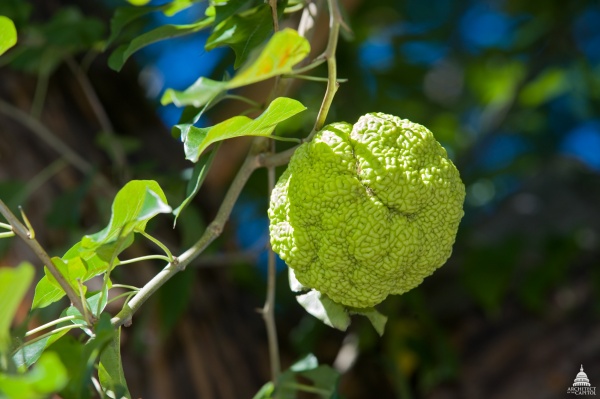
6 October 2015
Why is the Osage orange (Maclura pomifera) “monkey ball” such a prolific fruit when almost nothing eats it?
Why is the avocado seed so large? (Persea americana)
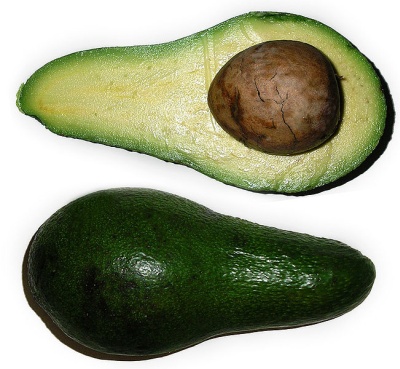
Why does the honey locust (Gleditsia triacanthos) have huge thorns on its trunk? …
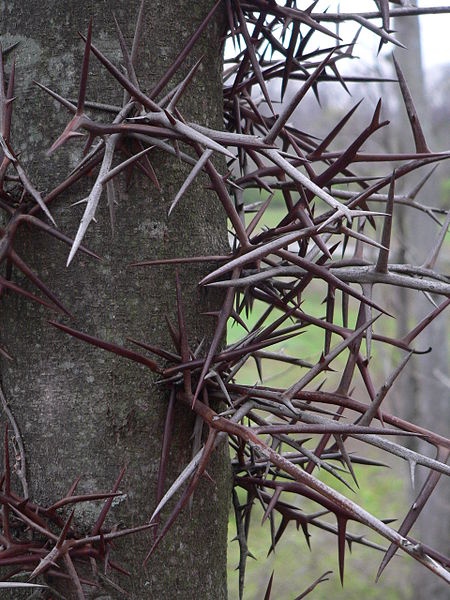
… and large seed pods that no one eats?
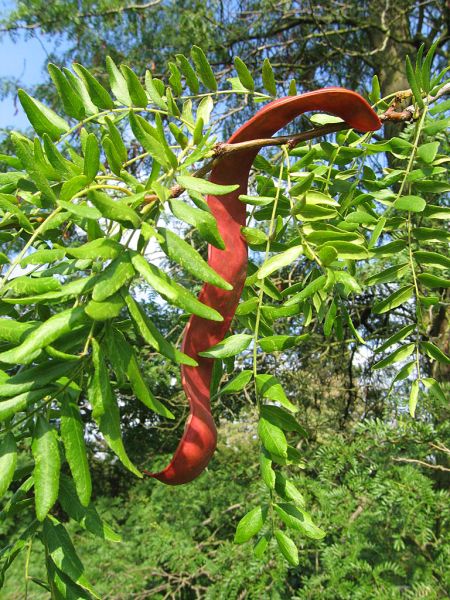
These plants were food for giants that are now extinct.
Just 13,000 years ago the Americas were inhabited by mammoths, horses and giant ground sloths whose diet included “monkey balls,” avocados and honey locust pods. Only a giant could eat such large fruit in one gulp and pass the seeds through its digestive track.
The giant ground sloth (Megatherium) for instance weighed 4 tons (8,000 pounds) and could reach 20 feet high when he put his paw on a tree trunk and stood on his hind legs. He could also damage the trees so the honey locust evolved big thorns for protection.
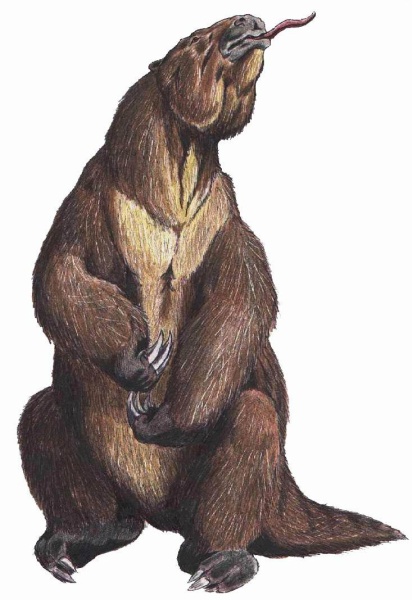
He’s been extinct for 10,000 years, but the tree remembers.
For a fun 5-minute video about the fruits that point to missing mammals, watch below.
Notes and links:
- Horses were extinct in North America until the Spaniards imported them. Modern horses eat monkey balls.
- Why the Avocado Should Have Gone the Way of the Dodo (from Smithsonian Magazine)
- Trees That Miss The Mammoths (from americanforests.org)
- Slothful trends in evolution; from walking giants to tiny tree-dwellers.
(photos from Wikimedia Commons. Click on each image to see its original)
Never thought I’d be wondering this, but since bears are famous for eating avocados here in CA, are they large enough to pass the pits? I wonder about the grizzlies that were once here? We have 2 trees, but so far just squirrels, skunks, and raccoons.
Janet, what an intriguing question!